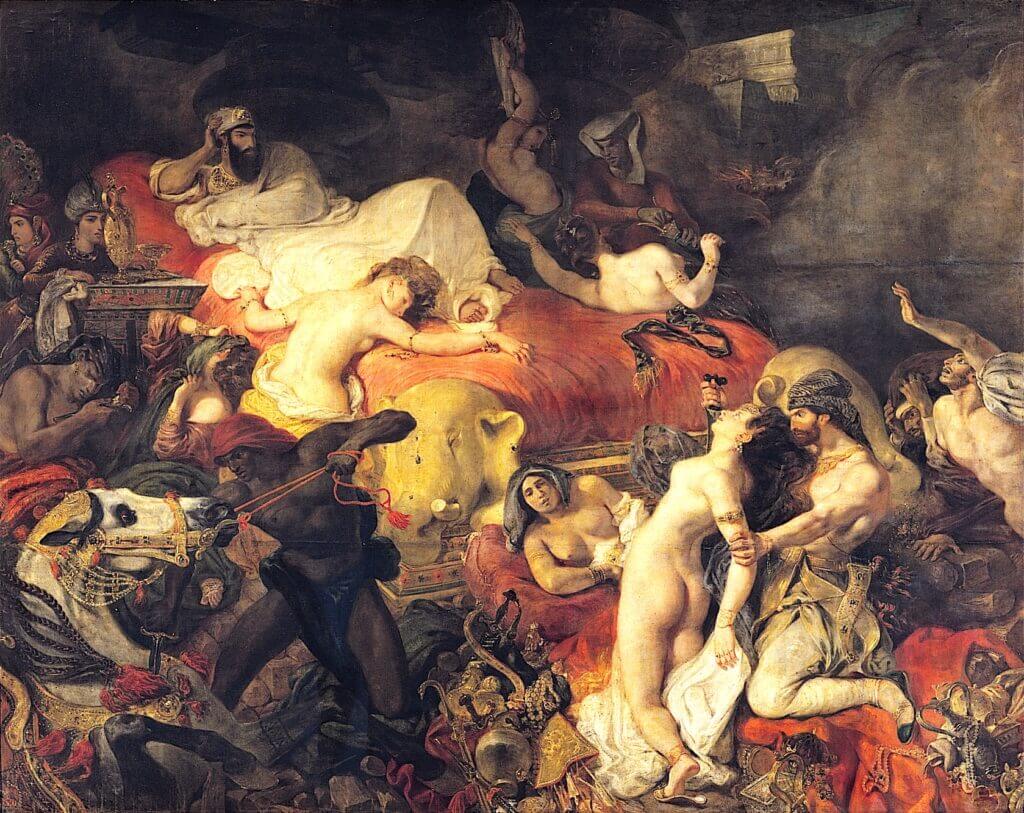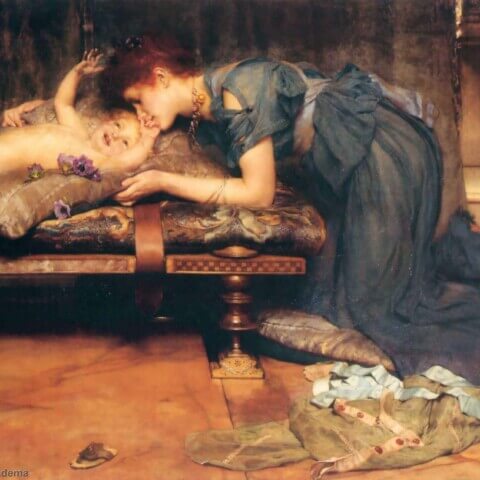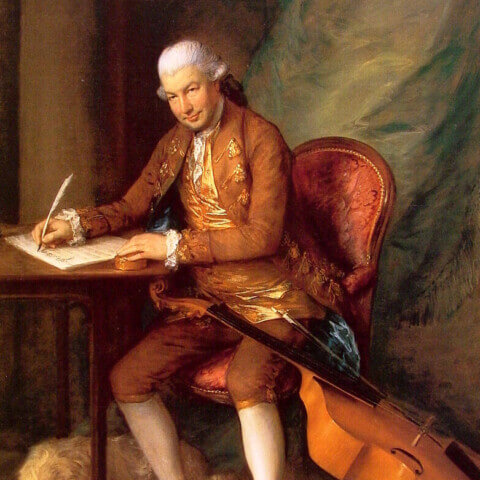Title: Eugene Delacroix’s “”The Death of Sardanapalus””: A Masterpiece of Romanticism
Year Painted: 1827
Eugene Delacroix’s “”The Death of Sardanapalus”” is an extraordinary painting that showcases the pinnacle of Romanticism in art. Created in 1827, this masterpiece captures the dramatic demise of the ancient Assyrian king, Sardanapalus.
Delacroix’s painting stands out for its remarkable use of color, composition, and emotional intensity. The vibrant and bold palette employed by the artist adds a sense of opulence and decadence to the scene. Deep reds, intense blues, and fiery oranges create a visual spectacle that immediately grabs the viewer’s attention. The juxtaposition of these rich hues not only adds visual allure but also heightens the emotional impact of the painting.
The composition itself is dynamic and filled with movement. Delacroix’s brushstrokes convey a sense of chaos and turmoil, reflecting the impending destruction of the palace and its inhabitants. The figures in the painting are depicted in various states of distress and despair. The contorted poses and expressive faces communicate the intensity of the moment, capturing the anguish and horror of the scene.
“”The Death of Sardanapalus”” is not only visually captivating but also carries profound symbolism. It explores themes of power, decadence, and the inevitability of mortality. Sardanapalus, as the epitome of excessive indulgence and arrogance, chooses to destroy his treasures and concubines rather than face defeat and captivity. This act represents the futility of material possessions and the fleeting nature of earthly power.
Delacroix’s mastery in capturing light and shadow further adds depth and dimension to the painting. The interplay between light and dark creates a sense of drama and emphasizes the contrasting elements within the scene. The artist’s ability to manipulate light draws the viewer’s attention to key areas, enhancing the narrative and emotional impact of the artwork.
“”The Death of Sardanapalus”” is a significant work in art history for several reasons. It epitomizes the essence of Romanticism, showcasing the movement’s emphasis on emotion, individualism, and the sublime. Delacroix’s innovative approach to color, composition, and storytelling broke away from traditional norms, paving the way for the development of modern art.
Moreover, this painting solidified Delacroix’s reputation as one of the most influential artists of his time. His ability to depict grand historical themes with a powerful and visceral impact set him apart from his contemporaries. “”The Death of Sardanapalus”” remains a testament to his skill and artistic vision.
In conclusion, Eugene Delacroix’s “”The Death of Sardanapalus”” is a true masterpiece of Romanticism. Painted in 1827, it captivates viewers with its vivid colors, dynamic composition, and emotional intensity. This iconic artwork not only reflects the artist’s technical prowess but also embodies the spirit of an era characterized by passion, individualism, and the exploration of human emotions.
At our art gallery, we take pride in offering comprehensive global shipping to our esteemed clientele. We understand the significance of your art acquisitions and the need to transport them with utmost care. Hence, we are committed to delivering your chosen paintings to any address worldwide and free of any additional charge.
Our reliable courier service partners are experienced in handling precious art pieces and ensure that your painting reaches you in pristine condition. We offer fully insured, door-to-door delivery, providing you with peace of mind that your artwork is protected during transit.
Moreover, to accommodate your unique framing preferences, we offer the distinctive service of sending your purchased artwork directly to any framer across the globe. This enables you to have your painting framed locally by your trusted framer, reducing the risk of damage during transportation.
Regardless of your location or your framer’s, we strive to make the process as seamless as possible. It is our goal to provide exceptional service that caters to your needs and ensures the safe delivery of your valuable artwork.
We invite you to experience our hassle-free, worldwide shipping service, which is aimed at delivering your prized art pieces safely and efficiently, wherever you may be.
Similar paintings
Join our newsletter
Signup for our newsletter and receive our inspiration guide and 20% discount on your first order!









